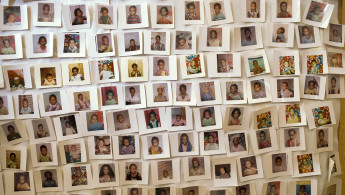200 million girls worldwide forced to undergo genital mutilation
At least 200 million girls and women worldwide have been subjected to female genital mutilation [FGM] with half of those living in Egypt, Ethiopia and Indonesia.
"Female genital mutilation violates the rights of girls and women," said Geeta Rao Gupta, UNICEF's deputy executive director.
"It differs across regions and cultures, with some forms involving life-threatening health risks."
The latest global figure, from a UNICEF report, includes nearly 70 million more girls and women than estimated in 2014.
Of the 200 million victims, 44 million are girls age 14 and younger.
In the 30 countries where the practice is most widespread, the majority of girls have undergone FGM before their fifth birthday.
In Yemen, 85 percent of girls experienced the practice within their first week of life, UNICEF said, declaring the practice a clear violation of children's rights.
 |
In the 30 countries where the practice is most widespread, the majority of girls have undergone FGM before their fifth birthday |  |
Somalia, Guinea and Djibouti continue to show the highest prevalence of FGM globally, but the overall rate in some 30 countries has dropped, according to the UNICEF report, released ahead of International Day of Zero Tolerance for FGM.
The United Nations is working to end the practice of cutting women's genitalia by the target date of 2030, a goal set in its new development agenda that was adopted in September by all UN member-states.
"In countries like Somalia, Guinea and Djibouti, the practice is practically universal," said Claudia Cappa, the lead author of the report.
"Being born in those countries means you have a nine out of 10 [likelihood] of undergoing the practice."
The prevalence rates for FGM in Somalia stands at a staggering 98 percent, with 97 percent in Guinea and 93 percent in Djibouti.
Cappa said the practice existed in other countries not included in the study, where large-scale data was not available, such as in India, Malaysia, Oman, Saudi Arabia, the United Arab Emirates, as well as in pockets in Australia, North America and Europe - where many migrants come from countries with a large number of female circumcisions.
Some progress
 |
|
| A poster hangs at a branch of the Red Crescent in Upper Egypt depicting a girl cut in half [UNICEF] |
Overall, the prevalence of FGM among teenage girls has dropped in the report's 30 countries, from 51 percent in 1985 to 37 percent today.
There have been major strides forward in Liberia, Burkina Faso, Kenya and Egypt to end the mutilation of girls.
Attitudes are changing, Cappa said, pointing to surveys showing that a majority of people in those countries want the practice to end.
"We need to support national efforts to promote the abandonment of the practice," said Cappa, pointing to successes in efforts to "change the way communities see FGM and cutting".
Since 2008, more than 15,000 communities have abandoned FGM, including 2,000 in the past year alone.
Five countries have passed laws criminalising the practice: Kenya, Uganda, Guinea-Bissau and recently Nigeria and Gambia in 2015.
The new legislation in Gambia is seen as a major step forward, as the country has the highest prevalence of FGM among girls 14 and younger - at 56 percent.
Some 54 percent of girls under 14 have undergone FGM in Mauritania, as have about half of girls 11 and younger in Indonesia.
Despite these gains, the rate of progress does not keep up with population growth, said Cappa, who called for stepped up efforts to address FGM.
"We must all accelerate efforts - governments, health professionals, community leaders, parents and families - to eliminate the practice."


